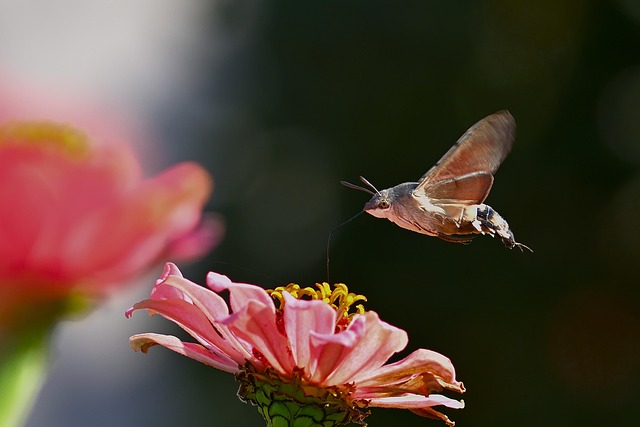Moth infestations can be effectively managed through a strategic approach combining professional services and proactive home maintenance. Identification of moth species guides targeted treatments like insecticides or natural repellents. Post-extermination, creating an unwelcoming environment for moths involves tidiness, clutter reduction, and specific material choices. Regular maintenance, including scheduled cleaning and sealing entry points, prevents recurring infestations. Professional moth extermination services provide periodic inspections and tailored solutions, ensuring a comprehensive strategy to keep moths at bay.
Moth infestations can be a persistent problem, but innovative techniques offer effective solutions. Understanding the behavior and life cycle of moths is key to prevention. This article explores comprehensive strategies for both professional moth extermination and long-term protection. From identifying entry points to implementing preventative measures like creating an unwelcoming environment, we provide practical steps. Additionally, regular maintenance routines are highlighted as crucial to avoiding recurrences. For a detailed guide, continue reading to master moth infestation control, emphasizing the role of professional moth extermination services.
Understanding Moth Infestations: Behavior and Life Cycle
Moth infestations can be frustratingly recurrent, especially for homeowners and business owners alike. Understanding the behavior and life cycle of moths is a crucial first step in developing an effective prevention strategy. Moths are attracted to darkness, moisture, and food sources like fabrics, carpets, and wood products. They have a short lifespan but lay hundreds of eggs during that time, leading to rapid population growth if left unchecked.
Professional moth extermination involves a multi-faceted approach. It starts with identifying the specific moth species infesting your space, as different moths have unique behaviors and preferences. Next, professionals use this knowledge to implement targeted treatments, including applying insecticides, sanitizing affected areas, and sealing entry points to prevent reinfestation. Regular maintenance, such as deep cleaning, vacuuming, and storing fabrics in airtight containers, further reinforces these measures, significantly reducing the risk of recurring moth infestations.
Professional Moth Extermination: Effective Strategies
Professional moth extermination requires a multi-faceted approach for lasting results. The first step involves thorough inspection and identification of the moth species infesting your space, as different moths have distinct behaviors and vulnerabilities. Once identified, professionals employ targeted treatments such as chemical sprays, baits, or natural repellents like lavender and cedar oil. These methods are designed to disrupt the moth’s life cycle by eliminating eggs, larvae, and adult moths.
For preventive measures, regular cleaning and maintenance are key. Keeping areas free from clutter reduces hiding spots for moths, while using airtight containers for food storage minimizes the risk of infestation. Professional services often recommend sealing entry points like cracks and gaps in walls or doors to prevent reinfestation. Regular professional treatments can also be scheduled to provide ongoing protection against recurring moth infestations.
Preventative Measures: Creating an Unwelcoming Environment
Creating an unwelcoming environment is a crucial preventative measure for keeping moths at bay, especially after a successful professional moth extermination. This involves a multi-pronged approach that starts with tidiness and extends to specific material choices. Regular cleaning and maintaining a clutter-free space significantly reduces hiding spots for moths, making your home less inviting. Additionally, using natural repellents like lavender, cedarwood, or lemon essential oils can deter these pests naturally.
For added protection, consider the materials you use in your home. Opting for natural fabrics that are less susceptible to attracting moths is a smart step. Silks, wools, and certain types of cotton are less prone to drawing them in compared to synthetic fibers. Sealing gaps and cracks around windows and doors also prevents moths from entering, as they often find their way indoors through these openings.
Regular Maintenance: Key Steps to Avoid Recurrences
Regular maintenance is an essential aspect of preventing recurring moth infestations, and it’s a key step often overlooked by homeowners. Professional moth extermination services offer tailored solutions to address this issue systematically. By scheduling periodic inspections, experts can identify potential entry points and hidden eggs or larvae, allowing for prompt action. Regular cleaning and vacuuming are also vital; these activities help remove moth-attractant debris and reduce the risk of future infestations.
Additionally, maintaining a clean and clutter-free environment is crucial. Moths are drawn to dark, quiet spaces with hidden corners, making it important to declutter areas prone to infestation. Sealing gaps in walls, floors, and ceilings also serves as a physical barrier against moths trying to enter your space. These proactive measures, combined with professional interventions, create a comprehensive strategy to keep moths at bay.
By combining understanding of moth behavior with a multi-faceted approach to prevention, including regular maintenance and professional moth extermination when needed, you can effectively manage and eliminate recurring infestations. Creating an environment that discourages moths is key, but it’s the specialized strategies employed by professionals that make the difference in completely eradicating these pests. With the right techniques in place, you can protect your spaces from future moth invasions.
